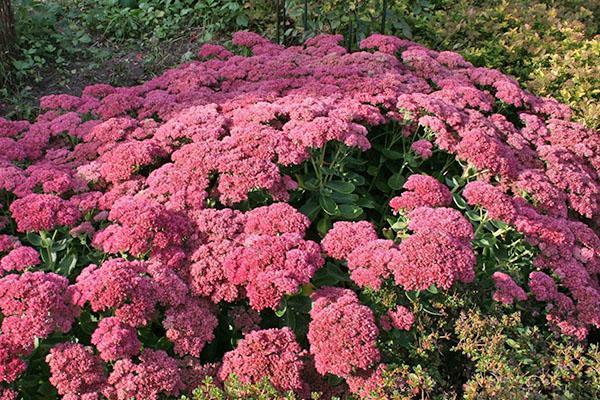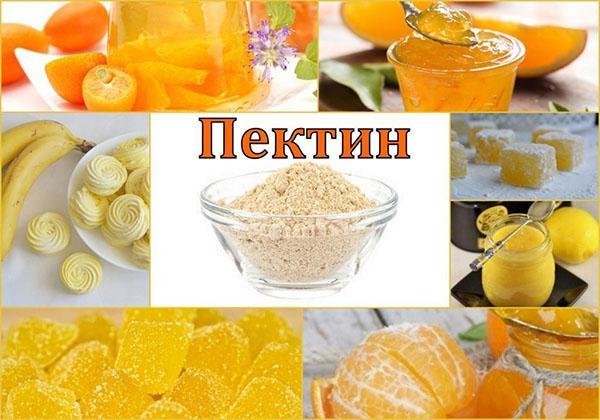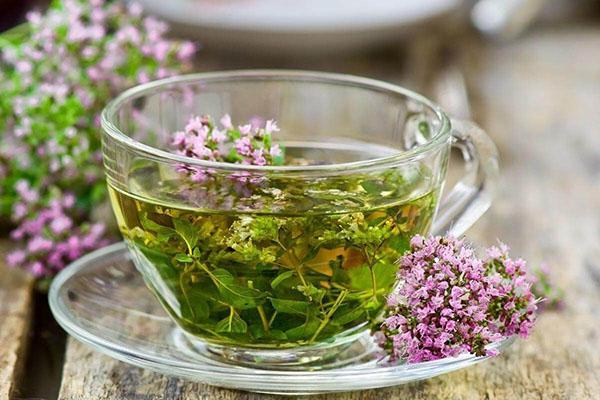The use of sedum in folk medicine: the properties of the herb and its contraindications
 The use of stonecrop in folk medicine has been known for a long time. It is a unique plant that can be found in Europe, Siberia, Japan, China and Mediterranean countries. Each region grows its own separate species with special properties.
The use of stonecrop in folk medicine has been known for a long time. It is a unique plant that can be found in Europe, Siberia, Japan, China and Mediterranean countries. Each region grows its own separate species with special properties.
Read also:golden mustache medicinal properties and contraindications!
Plant composition

The sedum is often referred to as hare cabbage, squeaky grass, and hernial grass.
Also in the leaves and other parts there are phenolic substances, namely:
- chlorogenic acid or caffeic acid;
- coumarin;
- catechins;
- flavonoid glycosides;
- cynarin.
The composition of stonecrop includes biologically active components. In particular, carotenoids and a huge amount of ascorbic acid. The plant stem is the source ash, magnesium, iron, potassium, copper, calcium.
The use of stonecrop in folk medicine
 Thanks to the healing properties of stonecrop, you can get rid of a number of dangerous diseases. Often, infusions and decoctions are prepared from it, which, if taken correctly, can reduce pain in the shortest possible time.
Thanks to the healing properties of stonecrop, you can get rid of a number of dangerous diseases. Often, infusions and decoctions are prepared from it, which, if taken correctly, can reduce pain in the shortest possible time.
Among the large number of sedum species, only pungent or yellow, as it is also called, is poisonous.
The sedum was so widespread in folk medicine:
- As part of an aqueous infusion, the plant treats intestinal disorders, scurvy, kidney, bladder, heart disease.
- The squeezed out stonecrop juice helps with epilepsy, is used in the treatment of inflammatory diseases of the female reproductive system.
- Fermented sedum helps to overcome sexual weakness, treats inflammation of the bladder and female infertility.
- Crushed roots and steamed leaves relieve muscle and rheumatoid pains, and treat colds.
- The plant's fresh leaves help soften calluses.
 The unique medicinal properties of sedum make it possible to take it to tone the body, treat inflammation, and also to improve overall health.
The unique medicinal properties of sedum make it possible to take it to tone the body, treat inflammation, and also to improve overall health.
The healing features of stonecrop
 The plant is used to stop bleeding, relieve pain. Due to the presence of wax, alkaloids and ash, sedum-based products are used to heal wounds. Sedum large, which grows in flower beds, has the same properties as other species.
The plant is used to stop bleeding, relieve pain. Due to the presence of wax, alkaloids and ash, sedum-based products are used to heal wounds. Sedum large, which grows in flower beds, has the same properties as other species.
Organic acids, ascorbic acid, saponins, alkaloids strengthen and calm the nervous system, and also normalize its work.
Alkaloids, tannins, ash, flavonoids and organic acids normalize the work of the heart and blood vessels, namely, they contribute to the correct construction of blood cells, lower blood pressure, and eliminate the risk of blood clots.
 In the treatment of colds, sedum is also powerful. Vitamin C, which is part of the plant, helps to strengthen the immune system. The mucus from the leaves, which is released during their processing, helps the separation of sputum, removes the inflammatory processes of the nasopharynx and the respiratory system. Tannins protect against parasites and bacteria.
In the treatment of colds, sedum is also powerful. Vitamin C, which is part of the plant, helps to strengthen the immune system. The mucus from the leaves, which is released during their processing, helps the separation of sputum, removes the inflammatory processes of the nasopharynx and the respiratory system. Tannins protect against parasites and bacteria.
 Also sedum helps to normalize the intestines and stomach.This is facilitated by glycosides, tannins, organic acids and ascorbic acid. Flavonoids are responsible for stimulating the formation of bile, which also improve the work of the adrenal cortex, and normalize the heart rate.
Also sedum helps to normalize the intestines and stomach.This is facilitated by glycosides, tannins, organic acids and ascorbic acid. Flavonoids are responsible for stimulating the formation of bile, which also improve the work of the adrenal cortex, and normalize the heart rate.
 Organic acids fight the formation of cholesterol plaques, thereby helping to normalize weight. In addition, they stabilize the metabolism, help get rid of toxins. Coumarins from the plant are able to suppress the vital activity of malignant cells, stop the spread of metastases.
Organic acids fight the formation of cholesterol plaques, thereby helping to normalize weight. In addition, they stabilize the metabolism, help get rid of toxins. Coumarins from the plant are able to suppress the vital activity of malignant cells, stop the spread of metastases.
Plant picking
 For medical purposes, only fresh herb is required. The collection of the plant should be carried out during the appearance of flowers, since it is then that the composition contains the maximum concentration of nutrients. It is recommended to collect herbs in dry weather, preferably in the morning, immediately after the dew has dried. You can cut the plant with scissors, sickle, knife. The freshly picked leaves are stored in a clean, dry place. The grass has a mild peculiar smell. The resulting raw materials can be stored and used for two years.
For medical purposes, only fresh herb is required. The collection of the plant should be carried out during the appearance of flowers, since it is then that the composition contains the maximum concentration of nutrients. It is recommended to collect herbs in dry weather, preferably in the morning, immediately after the dew has dried. You can cut the plant with scissors, sickle, knife. The freshly picked leaves are stored in a clean, dry place. The grass has a mild peculiar smell. The resulting raw materials can be stored and used for two years.
The collected plants should be dried:
- outside;
- under an awning or awning;
- in the attic.
Stonecrop roots need to be dug out in early to mid-autumn. They must be freed from the ground, then divided into equal parts and dried outside. The underground part of the stonecrop flower retains its healing properties longer than the leaves. Dried roots can be stored and used for up to three years.
Contraindications to the use of sedum
 The sedum has not only medicinal properties, but also contraindications. If the herb is taken too often, there may be a sharp increase in pressure, dizziness and headache, as well as nervous disorders.
The sedum has not only medicinal properties, but also contraindications. If the herb is taken too often, there may be a sharp increase in pressure, dizziness and headache, as well as nervous disorders.
People who suffer from allergic reactions should conduct a test before using stonecrop, since individual intolerance to substances may well manifest. Hypertensive patients also need to be careful. It is better to take funds based on this herb only after consulting a doctor.
If sedum is used externally, cover healthy areas of the skin with a towel to avoid irritation and burning. Internal use of the juice is possible only as prescribed by a doctor, since the herb contains substances in a strong concentration, which can cause nausea. Also, deviations in the work of digestion are not excluded. Failure of the respiratory and cardiovascular systems is often observed.
Sedum is a real miracle of nature that helps to cope with many pathologies. Thanks to the trace elements that are in the leaves and other parts of the plant, you can once and for all forget about even the most dangerous diseases.